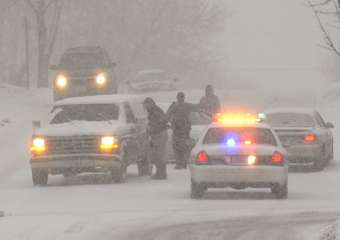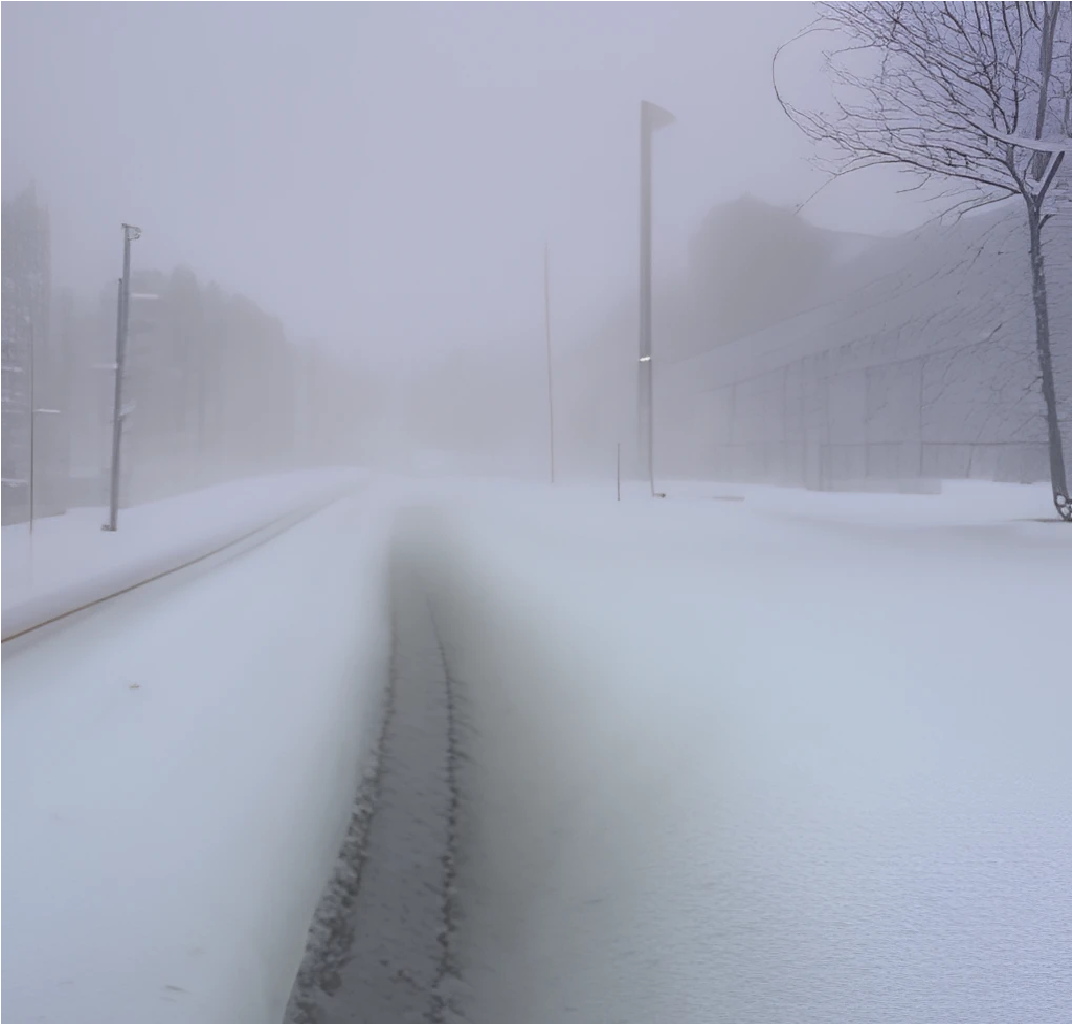Yah
by Kaitlyn
(Norwalk Ohio USA)
It crashed my soul (and saved my lungs) - When someone was two, snow slammed the family car and never left her heart. Laugh, gasp, and rebel with storms that don't care what you think. See it here...
Kaitlyn: When I was 2, I was in a car accident with my dad, going to get my mom from work. We went to stop and another car didn't stop.They hit us. we weren't hurt. But it was bad.
And it all was because of snow.
Barry's Response - I sorry to hear about that Kaitlyn. If you were only two years old, I'm quite surprised how well you remember it. Most people don't have clear memories from when they were two years old. It's more common to have few or no memories until around three or four. Scientists are still researching why this is. Our memories from childhood can be unreliable, because they can be influenced by later experiences and information. It is usually the repeated experiences and activities, like family vacations and activities, that stick with us.
Young children often don't remember traumatic events in a lot of detail because their brains aren't fully developed yet. So memories from early childhood are usually not very clear or complete. Children may not remember traumatic events they experienced, but they may still have feelings or impressions of them. These feelings may be expressed later on in life as fears, anxiety, or other emotions. The way children understand and react to traumatic events depends on their age and level of development. This can include support from mental health professionals, family members, and friends. It is also important to provide a safe and secure environment for them to express their feelings and talk about the experience.
Continuing my psychological exploration
- People tend to adopt more cautious or risk-averse behavior when faced with uncertain or ambiguous situations, which is called snow driving in psychology. The term "snow driving" comes from studies about drivers in snowy or icy conditions, when they slow down and drive more cautiously because of the increased risk of accidents. It's been applied to other situations where people may be uncertain or anxious, like decision-making or social interactions.
- Snow driving is related to risk perception, which is how people perceive and evaluate risks. Driving in the snow can be seen as an adaptive behavior, where people adjust their behavior to minimize risk and maximize safety.
- Snow driving isn't always the best response to uncertainty or risk. Some situations call for taking calculated risks or being more assertive. The best approach depends on the situation and your values and goals.
Fear of the unknown, I think
Snow driving and other cautious or risk-averse behaviors can certainly be influenced by fear of the unknown. When faced with uncertainty or ambiguity, people may feel anxious or fearful because they don't know what to expect. As a result, they might act more cautiously or avoidantly.
Fear of the unknown is a common human emotion that can be triggered by new or unfamiliar situations. Be aware of how your behavior and decisions are impacted by this fear. Taking risks and stepping outside your comfort zone can lead to new opportunities.
A therapist or counselor can help you if you're having trouble achieving your goals or enjoying life because of fear of the unknown. They can help you manage anxiety and develop confidence and resilience in uncertain times.
Still, driving cautiously in the snow is a good idea. Driving cautiously in the snow can help prevent accidents and keep people safe. Snow and ice can make roads slippery and reduce visibility, which increases accident risk. Slowing down and being cautious can give people more time to react to unexpected hazards, such as black ice or reckless drivers.
People adjust their behavior to accommodate changing environmental conditions by driving cautiously in the snow. Adapting to new work environments or social situations is an example of this kind of behavior. Nonetheless, caution needs to be balanced with other factors, like getting to a destination on time or the potential costs of being overly cautious. Driving too slowly in the snow might cause delays or create other hazards, so it might be better to take other measures, like using public transportation or delaying travel.
The snow caused the collision? Maybe. But the
government and the insurance industry would argue that the liability rests with the driver who did not adjust his style to the road conditions.
That's what usually happens, anyway.
Search this site for more information now.
Comments for Yah
|
||
|
||
|
||
|
||
|
||
Do you have concerns about air pollution in your area??
Perhaps modelling air pollution will provide the answers to your question.
That is what I do on a full-time basis. Find out if it is necessary for your project.
Have your Say...
on the StuffintheAir facebook page
Other topics listed in these guides:
The Stuff-in-the-Air Site Map
And,
Thank you to my research and writing assistants, ChatGPT and WordTune, as well as Wombo and others for the images.
OpenAI's large-scale language generation model (and others provided by Google and Meta), helped generate this text. As soon as draft language is generated, the author reviews, edits, and revises it to their own liking and is responsible for the content.





